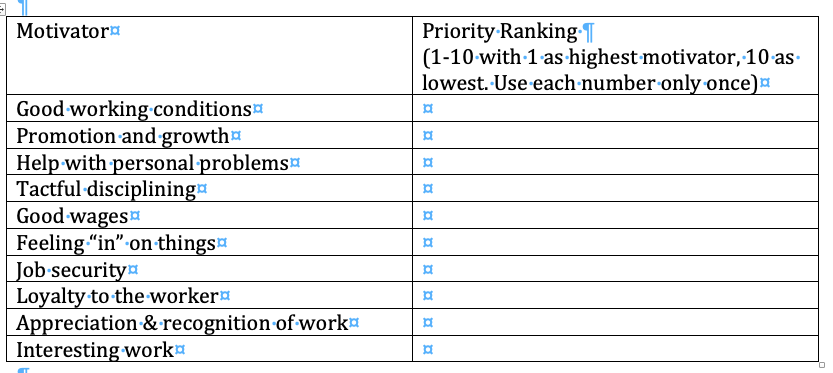The February BSC Wisdom Webinar and Work Session focused on Providers — how to choose, evaluate, and manage them better for both of you. Attendees added some great ideas from their own experiences. Check it out here: https://bit.ly/WisdomWebinar-UpgradeProviders-2-17-22.
Networking 2022: Trends and Tips
If you weren’t able to attend this BSC Wisdom webinar, you missed a great discussion and work session led by Jan Triplett, Austin’s Mother of Networking and author of The Networker’s Guide to Success and co-author Thinking Big, Staying Small with input and examples from attendees.
Here’s what this webinar/work session was all about:
• What’s the difference between Networking, Mentoring, and Prospecting?
• Your three types of networks and how to improve them in 2022
• Making better quality choices of how, where and with whom to network
• New networking roles and responsibilities
• When and how to say “No” plus “red flag” warnings
• Why your networking efforts don’t pay off
Here’s a link to the recording and transcript. https://bit.ly/WisdomWebinar-Networking-1-20-22
10 ways to give employees what they want

Even the biggest “carrot” can’t necessarily motivate staff. You need to find out what will. This picture is of the historical site of the Carrot Campaign, Port Hardy, British Colombia. Canada. It’s a symbol of government road building promises dangled in front of islanders since 1897 according to Wikipedia. (Photo by Diesel Demon http://www.flickr.com/photos/28096801@N05/3933107980/sizes/m/)
Do you know what motivates your employees?
Your employees should be grateful for their jobs, right? Satisfied? Motivated? But, they seem hesitant. It’s as if they’ve just put their heads down and are trying to bull their way through each day. How can you lead them if they aren’t motivated? You can’t.
What’s your Employee Leadership IQ? IQ as used here stands for Information Quotient. How’s yours when it comes to understanding and working with your staff? Leaders lead people; managers manage things. If you’re going to have a successful business, you have to lead successfully. To lead successfully, you want to hear and understand their priorities and motivators.
There are plenty of studies about understanding motivation. One of the most basic is the Ohio State University scholarly study (https://archives.joe.org/joe/1998june/rb3.php), a version of which I have used for years with everyone from police departments, to government employees, to small businesses. This 2020 blog from Smarp, the Top 15 employee motivation tips, has an excellent infographic that is worth studying. Jeff Miller’s 2017 article in Inc., 3 Important things you need to know about motivation, is more manager-focused than employee-focused but can be useful. The most useful research is to do your own. Keep reading for my recommendation.
However, it really comes down to really hearing what your employees have to say and responding to their needs and desires. One motivator doesn’t usually cover everyone because everyone is unique. There is one truth about motivated people, they motivate others. They motivate people to stay with you and new people to work for you.
Doubt this uniqueness? Want to measure your Leadership IQ? Here’s a simple and quick little experiment using the Employee Priority Motivator Tool™.
EMPLOYEE PRIORITY MOTIVATOR TOOL™

This list originally came from an informal class, Understanding and Working with People, offered at the The University of Texas at Austin but its origins go back even further to a study by James R. Lindner (https://archives.joe.org/joe/1998june/rb3.php). You may want to add to the list based on ideas from your employees, team leaders, or managers. I recommend you at least keep these 10.
Instructions.
- Using the tool above, rank each item from 1— 10 in terms of what you think are the motivating priorities of each employee.
- Then ask supervisors or managers to do the same thing.
- Finally ask each employee to rank the list for themselves. You can also ask them to rank the list for teammates.
- Now, compare what you thought, what supervisors thought, and what employees said about themselves and others.
There’s almost always a huge disconnect. When we have asked clients to do this, the owners, managers, and team leaders seem sure they know beforehand what motivates their employees. They are almost always surprised with what people say. Even in tough economic times, the employee motivator is not what they or you might expect.
If there isn’t a big difference in your results, congratulations! You’re on course to understanding and motivating your people. This will make leadership a lot easier. We are motivated by what will get us what we want (or value) within our unique timeline.
To get or keep employees motivated, keep checking. You also want to make sure they get what they need or show them that there’s real progress being made in that direction.
My final thought is: no matter what, take some action to find out what you need to do to motivate people. Don’t just jump in and hope you’ve got your employee motivation right. That’s a great way to waste a lot of money and effort.
What’s better for growth: a partner or a strategic alliance?

Partner or Strategic Business Alliance? Photo by Giorgio Montersino.
Get a partner or set up a strategic alliance — which is better for your business growth? Many business owners want a “partner” to share the load. Partners exert a lot of control no matter how little of the business they own. Use a strategic alliance instead to grow your business and keep more control.
What is a Strategic Alliance?
“If we are together, nothing is impossible. If we are divided all will fail.” Winston Churchill
In 2005, companies reported that 18% of their revenue was generated through strategic alliances. The economy has changed but there are still thousands of alliances formed each year and are critical as we re-think business post COVID-19.
According to Ard-Pieter de Man and Dave Luvison, authors of Collaborative Business Models: Aligning and Operationalizing Alliances (from Business Horizons Volume 62, Issue 4, July–August 2019, Pages 473-482), “the big challenge is to align company interests with alliance interests”. This peer-reviewed article is definitely worth reading and thinking about especially for larger organizations.
It pays to know more and think more before deciding that a strategic alliance is right for you.
28+ Business Permission to Operate “If” Clauses

There’s a lot below the surface when it comes to Business Permission to Operate
Anthony Palomba didn’t know about the “Business Permission to Operate If Clauses” when he started but he does now. He started Thakgnosis, which means “to know peace” but he hasn’t found time for that as a new business owner. The business is located in Austin, Texas, but it would have been the same no matter where he was. The Business “If Clause” is everywhere and affects all businesses of every size.
What is this nemesis? Who is this desperado, this spoiler, who steals the joy of business ownership? It’s all the other “stuff” that is required in order to do business besides providing products and services to customers. The biggest culprit: compliance.
The Business Permission to Operate If Clause is translated and understood to mean “you have our permission to do business here if you….” (fill in the blank). It can be costly — as much as $83, 019 in the first year and it doesn’t get better. Older businesses spend 40 hours on average dealing with federal regulations and another 40 on state and local regulations. Non-compliance is expensive averaging $30, 651 in fines. These figures come from the January 2017 Small Business Regulations Study conducted online by the National Small Business Association. This doesn’t even mention the other certifications, requirements, orders from industry and professional groups who also control permission. It may be correct to be a little skeptical about the figures (only 1000 survey respondents) but whatever they are, they certainly impact the attitude and behavior of business owners like Palomba.
The Business Permission If Clause has been around forever — since commerce began. It is what gives every business owner the permission or right to have a business in a community and serve its people. It goes by over twenty-eight different names and 160 times more when you translate those into the major languages of the world. The two most common names “rules” and “regulations”. (See list below.)
Business Permission If Clause 28+ Terms
| • Regulation
• Ordinance • Order • Permit • License • Rule • Certification • Code • Law • Legislation • Licensing • Restrictions • Treaty • Evaluation
|
• Standards
• Statute • Goal/Objective • Practices • Procedure • Provisions • Requirements • Package • Audit • Policy • Act • Contract/Agreement • Tradition • International Terms for all of the above
|
Over twenty-two different groups plus international groups by country, decide external governance — not just the local, state or federal government control that permission. (See list below.)
Governing Bodies Who Control or Influence the Business Permission to Operate If Clause
| • City
• County • State • Region • Federal Legislature • Licensing Agency • Trade Association • Professional Association • Home Owners Associations • Regulators • Grant Providers
|
• Agency/Dept
• Location owner/developer • Audit • Chamber • Council of Gov (COGs) • Insurance Providers • Financial Institutions • International Agencies • UN • EU and other groups of countries who have agreements • Individual Countries (not including the US)
|
Big Problem: Keeping Up with Business Permissions
The biggest problem for new owners as well as more experienced owners is keeping up with all those names and all those external governance permissions. It is a moving target but something to add to the MUST DO Task list.
There are some general realities about them that are worth repeating to all businesses:
- Laws remain on the books after no one follows them or believes them.
- Conflict in governance exists because there are conflicting rules.
- Probably two-thirds of proposed rules won’t apply to you — one third will — so you need to read them all to find that one third.
- Government rules originate from those who gain enough power to make the rule (citizens, Unions, countries, those with a lot to gain) not from those we elect; professional rules originate from leaders of the organization and their goals.
- You will have to make choices to obey or not based on your own ethics and moral perspective.
- You will be in violation at some point.
- You will have to pay the price of your decision to comply or not to comply.
- External governance is one of the hardest parts of being in business.
It’s easy in an election season to focus on the candidates and forget about what also matters to business — those neglected Propositions. Each one has the potential to become the next Business Permission to Operate If Clause because they affect your business, your workforce, your customers, and your community. Don’t do that. Do your homework. Pay attention to them and encourage others to really think about them before they vote.
4 Parts to a Platinum Customer Profile System™
There are 7 potential customer types you could have — Platinum, Gold, Silver, Bronze, Lead, Concrete, and RAW (Radio Active Waste). But you should have only the best, the Platinum Customer. They give you money and a lot more.
If you aren’t satisfied with the value of your current customers, make better choices by setting up a Platinum Customer Profile™ identification system. This is more than just “target” or “niche” marketing. The four parts of a Platinum Customer Profile™ are demographics, psychographics, behaviors, and geography. [Read more…]
Business Owners Hierarchy of Needs

What motivates business owners? It depends on where they are in the owners’ hierarchy of needs.
You’ve probably heard of Maslow’s “Hierarchy of Needs”. He identified how a person’s needs dominate motivation and behavior and that there is a specific order in which they should be met.
His theory suggested that the basic needs (physiological, safety, love and belonging) had to be met before the individual will desire and pursue higher levels of needs (esteem, self actualization, and self transcendence).
If a need is not met, the individual will feel tense and anxious. Although people may have several needs at any time, one will dominate their actions. [Read more…]
IRS Tax Calendar: Protection for Small Business

Get the IRS Tax Calendar for the safety and protection if you’re a small business owner or self-employed.
Protect your small business with this year’s IRS Tax Calendar. This is also known as “The Tax Calendar for Small Businesses and Self-Employed” (Pub. 1518, Catalog Number 12350Z). It’s a scary world out there!
It’s back in print. Hurrah! We’ve missed having them. We used to give these out each year to our clients because they are really valuable. They have also been known to cause nail-biting and hair-pulling. Unfortunately, all the Spanish language wall calendar print versions are gone and will not be re-printed. Maybe next year they will print more since Hispanic businesses are one of the fastest growing startup groups. [Read more…]
7 Ways to Have a Strong 4th Quarter Finish

Still time for 4th Quarter growth in your business. Photo by ItzaFineDay.
You deserve to have a strong 4th quarter finish. It’s time to harvest what you have reaped all year.
If you still need to sew some seeds to accomplish goals, we recommend the following: [Read more…]
Federal Contract Opportunities Shrink by 18K+ in October

Small Business Administration Office of Advocacy supports small business.
Are you a small business? Do you provide goods or services to the federal government or want to? Starting October 24, 2012, you will have over 18,000 new competitors for federal contract opportunities with the potential of even more competitors after November.
According to the Small Business Administration Office Of Advocacy, the Small Business Goaling Report, 2012 reported that in fiscal year 2011, 21.7 % of federal government small business eligible purchases went to small businesses.
Now, contractors will have to work even harder because their competitors are larger and stronger. That’s because effective October 1, 2012, Federal agencies and programs must use the United States Small Business Administration (SBA) small business size standards that are based on “NAICS 2012″. These are modifications adopted by the Office of Management and Budget. They include 76 new industries and changes to 11 sectors. Oddly, the public can comment on this “adopted requirement” until October 19, 2012. This has big implications for federal purchasing, loans, etc. [Read more…]
